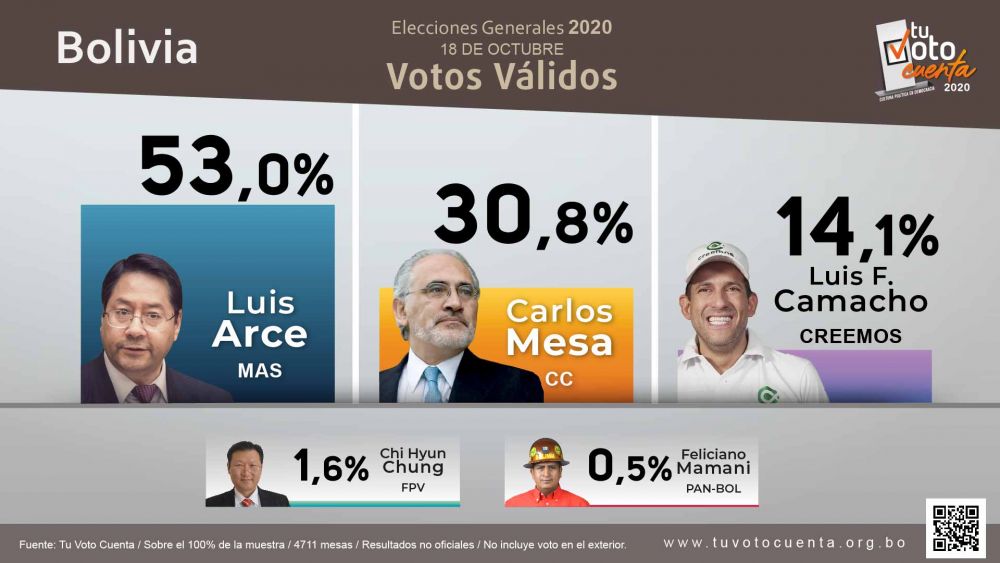
The MAS (Movement for Socialism) has returned to power in Bolivia following a crushing victory in the recent elections. Rather than a programme of compromise and national unity, bold socialist measures are necessary to overcome this period of tremendous crisis, and carry society forward.
That MAS candidate Luis Arce Catacora was the favorite in the Bolivian elections of 18 October was never a mystery. But neither the opposition, nor the international community, nor the MAS itself expected a victory for Arce with more votes than Evo Morales received in 2019, under whom Arce was finance minister.
The most credible prediction was a vote-by-vote dispute to determine the need or not for a second round. According to Bolivian election rules, a first-round victory is declared when a candidate gets 50 percent plus one of the votes, or when the victor gets 10 percentage points more than the runner up. For this reason, and to avoid any of the candidates jumping the gun, the international observer missions, particularly those of MERCOSUR and the UN, suggested to the Supreme Electoral Tribunal not to publish the data of the quick transmission system. The quick count system tallies the results of each ballot box before the actual official records are added up. They wanted to avoid the possible confrontations feared by part of the population, particularly in cities like La Paz, where long lines gathered at gasoline pumps on the eve of the vote to stock up on petrol.
We learned of the results of an unofficial quick count only at midnight, on Sunday, after the spokesman for the MAS campaign, Sebastian Michel, intervened to publicly request the public announcement of Arce’s victory. This is because there were already calls on social media to mobilise against possible fraud. However, as has been repeatedly clarified, the decision not to anticipate the official result of the vote was agreed upon by international observer missions with Arce himself and with former president Carlos Mesa of Comunidad Ciudadanasa, Arce’s closest contender.
It is noteworthy that, even in this appearance in front of the media half an hour after the scale of Arce’s triumph was known, Michel cited the same 45 percent of the vote that the MAS forecasted throughout the last months of the campaign. But, according to the data from the unofficial quick count, the MAS slate, composed of Arce and David Choquehuanca (the most prominent figure of the indigenous wing of the party) has won with between 52 and 53 percent. This incontestable victory has been recognised by all the adversaries of the MAS in these elections, by the transitional government, the international observer missions and world diplomacy, including the US State Department.
Such broad recognition of Arce’s triumph reduces the possibilities of the mobilisations that were threatened in Santa Cruz, Cochabamba and Sucre. These protests will not be able to replicate what happened a year ago, in which Evo’s narrow first-round victory led the right-wing opposition to claim fraud and mobilise their supporters in the streets. But nevertheless, for a section of the opposition (the far-right organised around the conservative Catholic candidate Luis Fernando Camacho, particularly in Santa Cruz), the political crisis has not ended. It seems Camacho would like to revive scenes from the early years of Evo’s struggle against the “Half Moon”: the bloc of eastern departments ruled by a reactionary bourgeoisie, who were prepared to destroy the country to maintain power. This is a warning of the social climate in which Arce will rule.
An incontestable victory
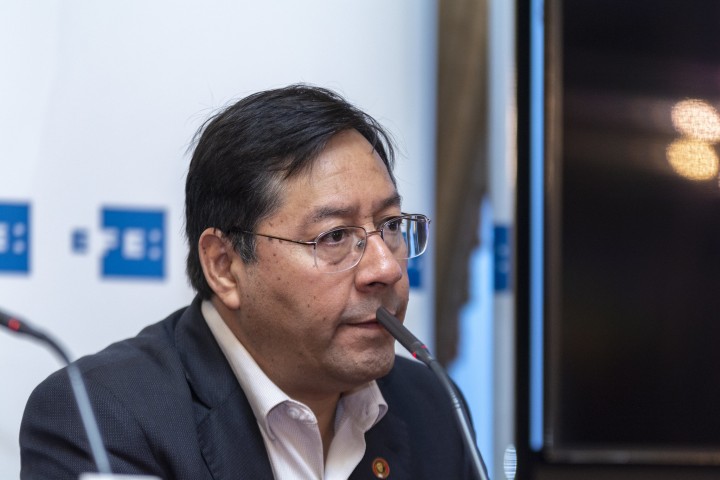
The distance that separates Arce from Mesa is approximately 20 percentage points. The third party, Creemos, for which former Santa Cruz Civic Committee chair Camacho was the candidate, obtained an overwhelming majority in Santa Cruz, but remains at 14 percent nationally. Arce conquered the departments of La Paz, Oruro and Cochabamba with 65 percent of the vote. He also won in Chuquisaca with 49 percent, in Potosí with 57 percent and in Pando with 47 percent. Mesa won in Beni and Tarija.
In Bolivia, the senate is a chamber of regional representation whose elections are highly undemocratic. Each of the nine departments, regardless of their population, elects four of the 36 deputies in proportion to the votes for the presidential candidates. The scenario that is being configured is that of a tie or a narrow majority for the MAS in the senate, where the opposition of Mesa and Camacho will possibly have a veto power for all issues that require a two-thirds majority, ranging from the appointment of high officials of the state (attorneys, prosecutors, ombudsman, magistrates, etc.) to the approval of certain laws, censorship or votes of confidence against ministers. Even approving a trial of former interim president Jeanine Áñez, which much of the electorate justly expects, would require a two-thirds majority.
In 2007/2008, in the same situation, Evo had to appeal to the working class of the countryside and the urban areas in order to overcome parliamentary obstacles. Arce would have every chance to lean on the mass mobilisations that have resisted and fought the Añez government in recent months. However, the perspective that he has presented to the party and the country is that of “a government of national unity.” This will have many consequences for the relationship between the MAS, the working class and the unions, and in general for the development of the class struggle in the country.
The disaster of the “transition”
There is no doubt that the dramatic situation left in the wake of the transitional government of Añez has been decisive for a sector of the electorate – that in the past voted for the MAS and in 2019 supported Mesa – to retrace its steps. Our country has experienced crises that continue to serve as case studies for world economists, such as the hyperinflation of the mid-1980s. However, any dark period in our history pales in the face of the catastrophic situation in which we are now immersed.
In just a few months, more than 100,000 jobs have been destroyed and poverty rates have grown at a dizzying rate. The collapse of the national economy, which was forecast at minus 7 percent for 2020, is already minus 11 percent. According to official statistics, we have the world’s third-highest COVID-19 death rate per 100,000 inhabitants, with a total of 8,500 deaths, which is equivalent to 75 per 100,000. However, the Civil Registry Service has reported that, between April and June alone, 30,000 more people have died than in the same period in 2019. This is four times more than the deaths officially attributed to the pandemic.
The coup plotters have laid bare before the eyes of thousands of workers in our country that bourgeois democracy is not for them. While working-class households without income were looking for ways to defer the payment of unsustainable rents, Añez defended the right of landlords to receive rent or to evict tenants. While factory workers and miners fought to defend our sources of employment, Añez gave a meagre one-off financial aid payment, covered by indebting the country to the IMF. While health workers risking their lives in the battle against the pandemic fought to get essential equipment and PPE, Añez and her government tried to distract attention by attacking the MAS’ record and profiteering from the purchase of urgent health supplies.
The failure of Mesa and the Camacho phenomenon
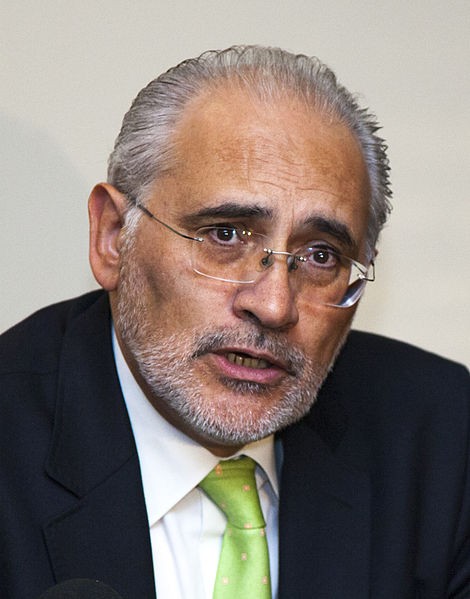
towards Arce / Image: Cancillería del Ecuador
The changing priorities of a section of the electorate that has proved as decisive now as it was a year ago, was lost on the businessmen Mesa and Camacho. Rather, the rise of the latter saw Mesa’s entire campaign focus on the call for a “useful vote” against the MAS: that is, looking to the right for support, and revealing the deception of Mesa’s so-called ‘transition’. Thus, he lost votes both towards Camacho, and especially towards Arce.
Arce’s broad victory excuses Camacho of having split the opposition vote. However, what really interested Camacho was consolidating the Santa Cruz vote, in which he succeeded. Camacho expresses the revenge of a deeply reactionary and colonial agro-industrial bourgeoisie, little accustomed to political mediation and more to ruling in manner of gamonal local political bosses, which hold economic power in the country without having been able to find a way of grasping political power. Camacho’s attacks on the leaders of business organisations that compromised with Evo’s government, as well as his idea of exporting the Santa Cruz model of economic ultra-liberalism and religious obscurantism, were born in this tumultuous breeding ground.
That such a character has achieved overwhelming support can only mean that the Santa Cruz bourgeoisie has achieved hegemony by contaminating the social problems of a department, with the highest concentration of workers in the country, with narrow regionalism. Arce and the MAS could split up Camacho’s regional support along class lines, but only by relying on the struggle of the working class against the Santa Cruz oligarchy. However, in the past, and in Arce’s plans for the future, there is no evidence of this.
Last year, Mesa gathered around him much of the discontent towards Evo and the MAS. Even many of his candidates or leaders of his list had been elected officials of the MAS party, including Mesa himself, who was the former Bolivian spokesman for Bolivia’s claim to access to the sea, which it lost in its war with Chile. It is no exaggeration to say that Comunidad Ciudadana could be considered a right-wing split from the MAS. The stated aim of this grouping was to prevent Evo from being re-elected indefinitely, following the result of the referendum of 21 February 2016.
Mesa proposed himself as the continuation of the good aspects of the MAS’ “process of change”, without its authoritarian and bureaucratic degenerations. His motto: “neither privatisations nor new nationalisations” is a bourgeois way of expressing the purpose of “redirecting” this process of change, in the words of many of those who left the MAS. It is obviously a “redirection to the right”, as we said last year, but at that time this was less visible in the eyes of the electorate. Mesa has continued to present himself as the main opponent of the MAS when the masses were looking for a tool to fight Añez and the corruption, repression and ineptitude of her government.
Again on the fall of Evo
Arce himself spoke of “redirecting our process by learning from our mistakes”. Choquehuanca, even more clearly, has recognised that the excess of power and interference from Evo’s old cabinet has corrupted the process of change, and has declared that none of the former president’s collaborators will return to power. Much of the MASista and union leadership have expressed themselves in the same vein. Evo himself, who had announced he would return to Bolivia the day after the electoral victory, remains in Argentina and raises, like Arce, a call to “all parties, businessmen and workers to hold a great gathering, a reconciliation pact.” This is the expression of the balance sheet that the MAS has drawn up after the fall of Evo, which is very close, even in rhetoric, to that of Mesa, and with which we do not agree.
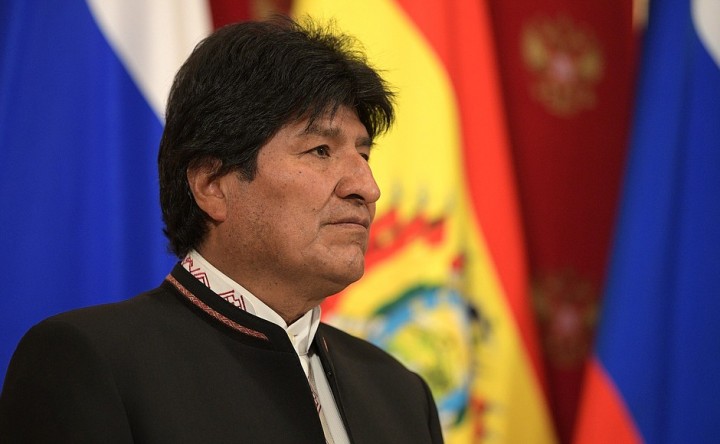
bureaucratic manoeuvring / Image: PoR
From the party’s left, former minister Hugo Moldiz, an exponent of the Bolivian Guevarist movement, has published a book with a very clear title and subtitle: Coup d’état in Bolivia: the loneliness of Evo Morales. In the book, Moldiz, with the testimony of the Argentine sociologist Atilio Borón, who was in La Paz in the days following Evo’s resignation, raises the question of why there was no mobilisation in defence of the MAS government, and why even those that did come out did not demand the return of Evo.
The answer that Moldiz gives can be summarised as follows: having replaced the perspective of social transformation with the perspective of “Andean Amazonian capitalism”, that is to say a capitalism with national base, the MAS has become stripped of ideology, incapable of even recognising the advancing enemy. In this analysis, there are elements of truth and many omissions. Moldiz, consistent with his vision, conceives society as a battlefield in which the masses are the grass, trodden down by the real combattants.
Even without a clear view “of what they wanted, and even less…. a conscious adherence to an alternative project to capitalism”, as he very superficially writes, the masses have resisted the prospect of “Andean Amazonian capitalism” in lively struggles for land, labour rights, nationalisation of companies, etc. All these struggles Moldiz puts indistinctly in the bag of “destabilisation”, with the result that the Potosi market stall holder who occupied the mines exploited by a multinational turns out to be an undercover agent for the CIA. This false analysis explains why the MAS left is relegated to an ever-more marginal role.
García Linera has also returned to the question of the fall of Evo to repeat his analysis based on “the middle class.” For him, the erosion of the vote for MAS is due to having maintained a discourse linked to the material and political demands of those from “very low”, without the ability to integrate the middle class. These are nice, empty arguments, and indeed the middle class is a “great void” that the reformists can fill however they want.
We will explain this with a simple example. In Bolivia, we have a tax system: a neoliberal heritage that the MAS did not reform, which is the dream of the right wing all over the world. Namely, a “flat rate” of 25 percent on company profits, be they gas multinational REPSOL or a local toy store. It is contrary to any principle of progressivity, that is: those who have more should pay more. By increasing this tax on the top 100 companies (particularly in the mining and finance sectors, which represent 60 percent of the country’s fiscal income) by a few percentage points, it would be possible to reduce the VAT that falls on all without distinction, allowing the “very low” to buy more and the toy store owner to have a better life.
By not doing so, the toy store owner will see only the one who does not pay taxes: be that a coca-growing cocalero peasant or a worker in the informal sector. This is what has happened, what continues to happen and what García Linera does not understand. Nothing that is said about the middle class or how to “integrate” it into a project of social transformation makes sense if it does not start from a fundamental postulate: the middle class does not exist as an independent political subject. Either it follows REPSOL, against the working class, or it follows the working class against REPSOL’s interests. García Linera wanted them to follow Evo along REPSOL’s path: this is what led to the defeat of the MAS.
Arce’s redirection
In our opinion, the matter is clear. The working class of the countryside and the cities led the MAS to power, regarding it as a tool in the fight against the bourgeoisie and its power, which also has a racist structure in our country. The economic boom, a product of active state policies in a favorable international context, allowed MAS to consolidate itself in power as a tool for class collaboration, which always ends up being collaboration of the working class with its executioners. With the end of this period, the working class did not find in this party, vertically organised and linked to its charismatic leader, a channel through which to express their opposition. Thus, Mesa, helped by the MAS itself, clung to the discontent with the MAS and we know the consequences: the forcible removal of Morales from power a year ago.
As always, García Linera’s speeches are great mountains which bring forth mice, to paraphrase Marx. But it is easier to translate them politically than the abstruse entanglements about “consciousness” delivered by people like Moldiz. In fact, all this analysis by Linera leads to a clear political line: programmatic moderation and class collaboration. This is what Arce and Choquehuanca propose to Bolivia and to a renewed MAS, sacrificing Evo, whose future role is in question.
Arce has already announced that the first act of his government will be to arrange the payment of a 1,000 bolivianos [US$144] of financial help to all citizens and to promote the internal market. He will do it (as perhaps he will do something against the wave of layoffs that continue in the country) possibly under the same line of the law that the MASista caucus in parliament approved a few months ago. That is, a temporary suspension of layoffs: a kind of truce. But with the same clarity, he has announced that at least a couple of years of sacrifices await us. In the first speech we mentioned, he reached out to the businessmen and asked them, rather than Mesa or Camacho, to be part of a government of national unity.
No detailed analysis of Arce’s programme is now necessary to understand the contradictions his government will face. It is enough to report what he says. Arce has presented himself to the electorate with this message, more or less word by word, “with the nationalisations I took you out of the crises of 2008 and 2015”. They were not true nationalisations, but in a favorable context, they worked. But what does he propose to nationalise now? Nothing. This crisis must be resolved in a different way, he suggests, and MAS spokesman Michel assures us that Arce will “change the change.” A message thus directed at businessmen and not against them means that the solution to the crisis that Arce has in mind is not the one expected by the working class.
Only the working class can solve the crisis
The line of class collaboration, of the great national agreement that Arce proposes, is a step back even with respect to others that Evo has taken in the past. Evo first agitated for the nationalisation of gas, and then agreed terms with the multinationals so that it would be a good business for them too. On the other hand, Arce’s mission is to re-establish co-existence and recover the economy; that is: to rescue rotten Bolivian capitalism. But the crisis raises pressing social and economic issues so urgently that the working class will not give Arce long to achieve their goals.
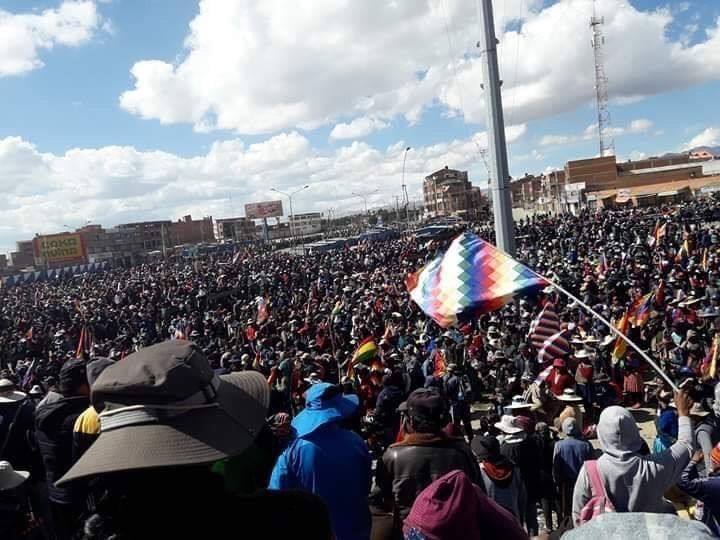
in Bolivia to a positive conclusion / Image: fair use
In the past months, we have seen one of the most important factory strike movements in the history of our country grow and radicalise. If the general strike decreed in August failed to fully involve these workers in the struggle, it was only because the strike was organised around a political agenda, that of the MAS, which did not present a solution to any of the problems that provoked the movement, and because of the total discrediting of the MASista union bureaucracy. The majority of the working class has decided to support Arce, because it was able to experience first hand what a government organically at the service of the bourgeoisie means. But, as in August, it will not wait for Arce to convince the capitalists. And the latter will not accept the MAS again trying to tell them how to do their job, which is to live off the labour of others.
As Marxists we have contributed, with all the poor and working people, to the defeat of Añez, Mesa and Camacho, and we celebrate it. But, like the workers, we do not hand over a blank cheque to Arce. Instead, we openly criticise his political outlook of faded reformism. The “redirection” that he proposes is obviously not a democratisation of the MAS, but rather a more explicit and impossible collaboration between those who fire and those who are fired, defended as the only alternative to prevent those who fire from returning to power.
This is not the perspective of any of the workers who have struggled in these last few months. It is our task to help the working class find its own perspective in the struggle for union democracy, and for a trade union leadership that is a genuine expression of the labour movement. This will develop during the inevitable frictions and disagreements that will occur between the workers’ movement and the government of Arce. The new period that is opening up, in the shadow of a massive crisis, can end in very few ways. The working class will try to resolve the crisis in its own way, irreconcilably opposed to interests and proposals of the bourgeoisie. This is the only possible option to transform society.

